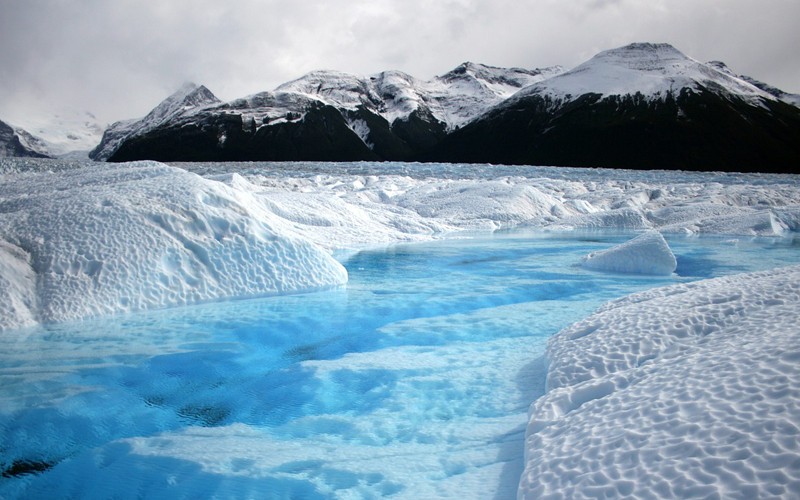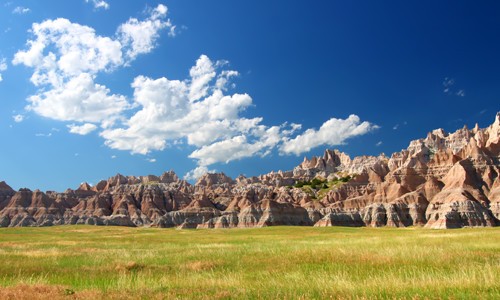Climate Types
The concept “climate” refers to the predominant or average weather
recorded in a given area for a time long enough that all the possible
weather scenarios in such area may happen. The climate is a permanent or
long-time concept while the weather changes within hours. Therefore,
“climate” and “weather” are different but related concepts.
The climate depends on several interrelated factors:
latitude, longitude, elevation, topography, proximity to the sea and
wind direction. Therefore, although the areas located near the equator
are usually warm, there are mountain zones on the same latitude that are
cold.
In general, there are three types of climate: warm, temperate, and polar.
Multiple Types of Climates.
In general, there are three types of climate: warm, temperate, and
polar. Warm climates are found at low latitudes and are characterized by
high temperatures; the inclination of sunlight is minimal. Therefore,
the radiation is constant. In temperate climates, located at
mid-latitudes, temperatures are usually mild to moderate, and polar
climates, which occur at high latitudes, usually have temperatures below
10 °C during the warmer months; typically they are found in the polar
circles.
Now these three groups have more precise climates, so it is important to know the classifications.
Now these three groups have more precise climates, so it is important to know the classifications.
Climate classification.
Although there are several classifications of climate, the best known
is perhaps the one made by Wladimir Köppen, a German climatologist of
Russian origin who created this climate classification:
Group A: Tropical climate.
a. Tropical wet.
It is a warm climate but with regular rain: the annual rainfall exceeds 150 centimeters. Temperatures vary little throughout the year.
It is a warm climate but with regular rain: the annual rainfall exceeds 150 centimeters. Temperatures vary little throughout the year.
b. Tropical wet and dry.
It is also known as tropical savannah. In this case, temperatures vary moderately, but they are usually warm to hot.
It is also known as tropical savannah. In this case, temperatures vary moderately, but they are usually warm to hot.
Group B: Dry climate.
a. Arid.
Summers are hot, and winters are cool or warm. Rainfall is low.
Summers are hot, and winters are cool or warm. Rainfall is low.
b. Semiarid.
Although it is a hot climate, it is more moderate than the arid climate. Regions with this climate fall between those with an arid climate and tropical climates.
Although it is a hot climate, it is more moderate than the arid climate. Regions with this climate fall between those with an arid climate and tropical climates.
Group C: Moderate climate.
a. Mediterranean.
It is warm to hot climate. While winters are rainy, summers are dry.
It is warm to hot climate. While winters are rainy, summers are dry.
b. Humid Subtropical.
Regions with this climate are usually in the eastern part of the continents. They experience hot, humid summers and colder winters. Precipitations have a regular distribution throughout the year, but hurricanes are common.
Regions with this climate are usually in the eastern part of the continents. They experience hot, humid summers and colder winters. Precipitations have a regular distribution throughout the year, but hurricanes are common.
c. Marine West Coast.
They are in the western areas of the continents where the wind direction is from the sea to land. Winters range from cold to temperate, and summers are warm, with moderate rainfall most of the year. Examples of cities with this climate: Seattle, USA and Wellington, New Zealand.
They are in the western areas of the continents where the wind direction is from the sea to land. Winters range from cold to temperate, and summers are warm, with moderate rainfall most of the year. Examples of cities with this climate: Seattle, USA and Wellington, New Zealand.
Group D: Continental climate.
a. Humid Continental.
Regions with this climate have moderate to hot summers and cold winters. Throughout the year, the temperature difference can range from – 3°C to 22°C. Most of Eastern Europe has a humid continental climate.
Regions with this climate have moderate to hot summers and cold winters. Throughout the year, the temperature difference can range from – 3°C to 22°C. Most of Eastern Europe has a humid continental climate.
b. Subarctic.
An area with this climate has cool summers and cold winters. Most of the rainfall occurs during the summer. This climate is present in northern Scandinavia and Siberia.
An area with this climate has cool summers and cold winters. Most of the rainfall occurs during the summer. This climate is present in northern Scandinavia and Siberia.
Group E: Polar Climate.
Low temperatures are the rule throughout the year, although there are variations.
a. Tundra.
This climate is dry, and permafrost, a layer of ice, regularly covers the soil. It locates in the northern limits of North America, parts of Russia, and of course, the edges of Antarctica.
This climate is dry, and permafrost, a layer of ice, regularly covers the soil. It locates in the northern limits of North America, parts of Russia, and of course, the edges of Antarctica.
b. Ice cap.
It is the coldest weather on Earth, with temperatures that are rarely below freezing point. It is present in Greenland and most of the Antarctic continent.
It is the coldest weather on Earth, with temperatures that are rarely below freezing point. It is present in Greenland and most of the Antarctic continent.
Group H: Highland climate.
Sometimes, this climate is included in the above group (E), but other authors consider it as an individual climate (H).
It is present at very high altitudes in mountainous terrain. Areas
with this climate experience rapid elevation changes, causing rapid
climate changes over short distances.







No comments:
Post a Comment